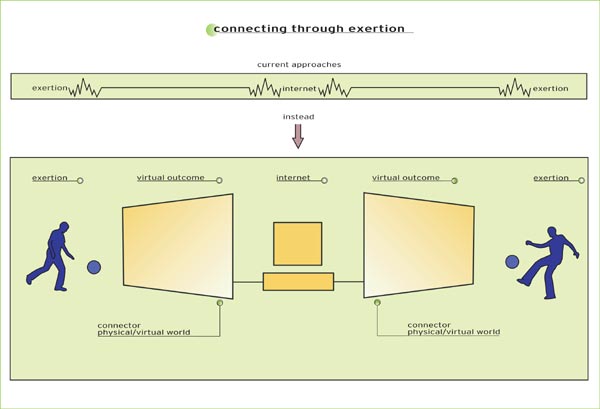Transmitting Exertion
How perfect would it be if one could throw a ball over a net, and have it come out somewhere else with the same characteristics, i.e. spin, speed and direction, all in real-time? This would be the ideal for Sports over a Distance, but unfortunately, even in the near future, impossible to implement.
Most sports, such as tennis, are simply too fast, and high accuracy is an
important part of the game. Even in social games like air-hockey, the puck?s
precise movement and high speed is essential. A replication of air-hockey
over a distance would require building a device which would shoot the puck
out at the right angle and with the right speed on the remote end. Several
problems arise with this:
• How can the speed, position, direction and spin of the ball be detected?
• How can the same characteristics be applied to a ball on the remote
end?
• How can this be accomplished in real-time?
• How can the machine that shoots out the ball hold unspecified numbers
of balls for a game?
• How can the system, after detecting the ball.s speed etc. make the
ball vanish and then reappear for the other player on their side?
To overcome these issues, an alternative solution is considered. Instead
of trying to create the illusion that the exertion itself would be transmitted,
the result of the exertion is sent. The 'natural feedback' of the ball is
applied directly to the player, not to the opponent, by exploiting the fact
that it bounces back. Virtual objects are the link between the exertions of
the players by responding to their actions; this is viewable by both.
These virtual objects are coupled to the local exertion by means of a connector
between the physical and virtual world, in our case a wall that the ball bounces
against.
Instead of trying to transmit the exertion, a connector measures the outcome
of the exertion, transforms it into a virtual outcome, and transmits it to
the remote location.
Instead of attempting to transmit exertion, the virtual outcome is simply transmitted, leaving the 'natural feedback' of a bouncing ball on each side.
